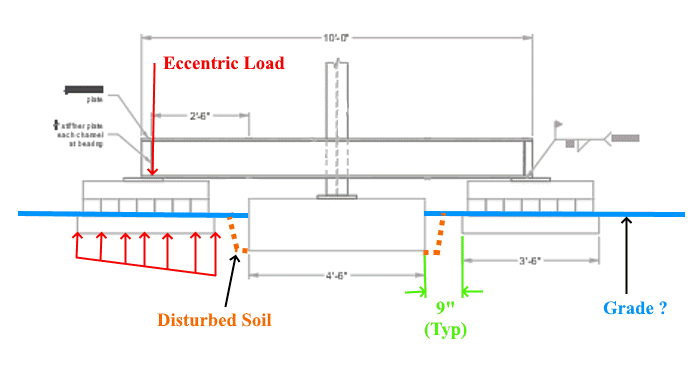Ok, here is my understanding... it does not make total sense to me, but my best interpretation:
Blue - Is the bottom of the cribbing below grade?
Orange - Some soil (wider than the perimeter of the footing) will be disturbed during demolition... how much is an educated guess.
Red - If an eccentric load were applied to the cribbing, note that contact pressure between cribbing and soil is highest at the worst possible place... closest to the excavation. Avoid eccentric loading, as much as possible.
Green - Nine inches is a ridiculously tight clearance. The excavation is shallow, but the risk of heavy equipment accidentally impacting heavily loaded, weak (Y-axis) beams is high. I would want that distance to be at least 3' instead of 9"... of course there are consequences:
The selected beams that passed for 10' span, likely fail for 14.5' span. Revisit beam size and bracing, do what it takes to increase Y-axis strength.
There is probably more, but that is what I see with my assumptions... comments?

